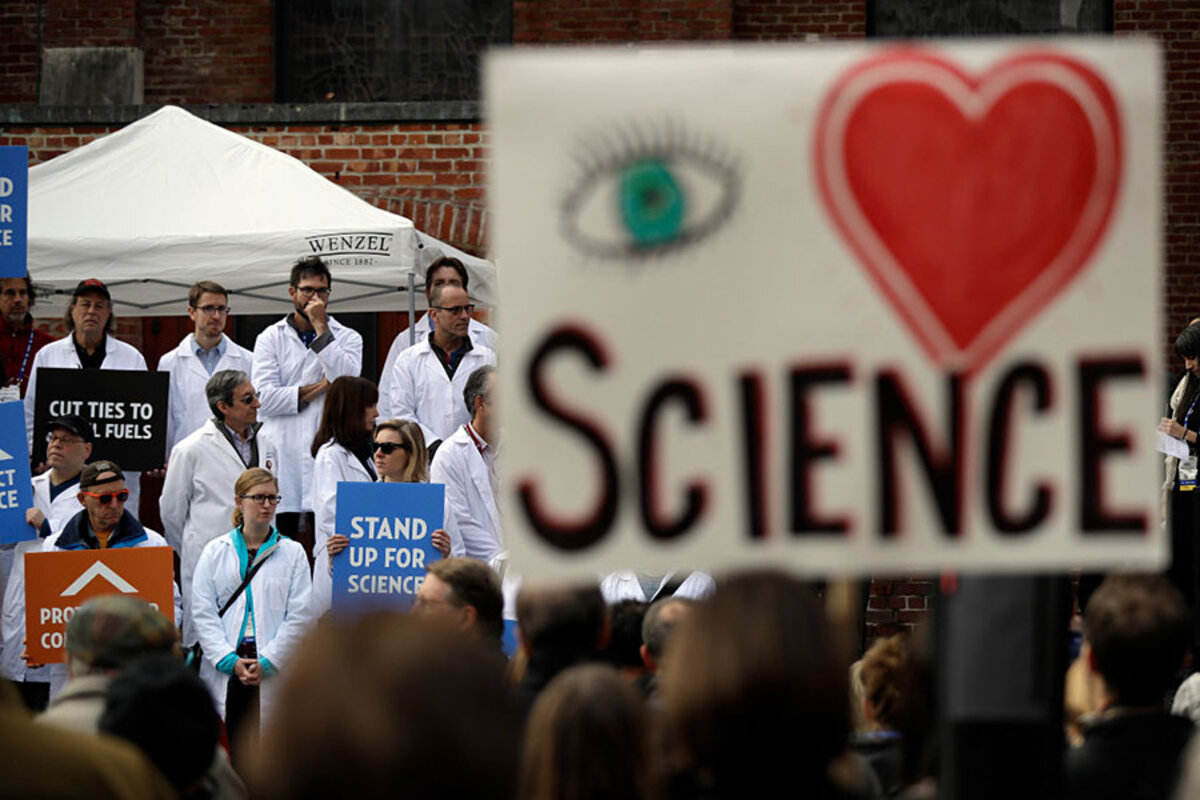Seven outstanding scientific breakthroughs in 2016
Loading...
With excitement swirling around the possibility of a ninth planet, a rebound in the global tiger population for the first time in a century, and the DNA sequenced in spaceô for the first time,ä»2016 has been a year full of scientific wonder.ô
But as the year comes to a close, there are some breakthroughs particularly worth highlighting.
Here are 7 outstanding scientific achievements from the past year to keep in mind as 2017 waits just around the corner:
Gravitational waves detected, twice
In February, a century after Albert Einstein predicted their existence, an international team of researchers confirmed that they had actually detected a ripple in the fabric of spacetime for the first time. The detection of gravitational waves came across as a "chirp" across the detectors that make up theô Laser Interferometer Gravitational-wave Observatory (LIGO),ä»but the researchers say it was the result of two large celestial bodies, possibly black holes, colliding someô 1.3 billion years ago.
Then, in June, the scientists announced that the cosmos had chirped again.
"A second event is important to further confirm that the first event wasn't something really special in the universe that happened only once," Carlos Lousto, an astrophysicist at Rochester Institute of Technology who was part of the research team, told ¤È§úǵèþ then.
Although the LIGO team was a popular choice to win the Nobel Prize in Physics, theyô did not win the prestigious award. That honor instead went toô three British physicists working in condensed-matter physics. Science magazine made sure the international team was not completely snubbed, however, and named the detection "Breakthrough of the Year" for 2016.
Read more:ô Einstein verified: 'Monumental' gravitational waves discovery was 100 years in making, andô Space-time ripples: How Einstein's gravitational waves are detected
Artificial Intelligence bests human intelligenceô
In what was once a futuristic scenario, Googleô DeepMind'sô artificial intelligence program, AlphaGo, trounced the reigning human worldwide champion in the challenging, centuries-old strategy game, Go, in March.ô
Although it was a resounding defeat for the human champion,ä»Lee Sedol, the computer did lose one of the five games played. AlphaGo had already defeated the European human Go champion 5-0, in January.
This feat wasn't just about a game, it was a chance for Google's DeepMind team to test a method for building artificial intelligence.ô
The trick was to teach the computer to employ "deep learning" to hone its skills and teach itself new strategies, whichô Google DeepMind research scientist David Silver called "much more humanlike" than previous AI learning approaches. The success of deep learning in AlphaGo could be applied to many other research challenges, from climate modeling to medical diagnoses, or even to social issues such as recidivism, or why people released from prison do or donãt commit additional crimes.
Read more:ô Why Google AlphaGo's victory over a human isn't just about Go
That hole in the ozone layer is finally shrinking
It was once a popular call to action for environmentalists, but now it may become a success story.ô
For decades, a gaping hole had been opening up seasonally in the ozone layer, which acts as a sort of protective blanket around the Earth,ä»blocking out harmful wavelengths of ultraviolet (UV) radiation that disrupt the cells of living organisms. In a June paper in theô journal Science, scientists announced that the ozone layer is on the mend.
That massive hole was first discovered inô 1985. Researchers quickly probed into what was causing it and discovered that certain industrial chemicals were triggering chemical reactions in the atmosphere that was damaging the ozone layer. An international treaty ã the Montreal Protocol ã began to phase out the use of those chemicals in 1987. Now, nearly 30 years later, scientists are saying that treaty is why the hole in the ozone layer has begun to shrink.
"The healing of the Antarctic stratospheric ozone level is the most significant environmental success story of the 20th century," Michael Newchurch, an atmospheric chemist at the University of Alabama at Huntsville who was not an author of the Science paper, told ¤È§úǵèþ in June.ô
Read more:ô Ozone hole on the mend, say scientists (+video)
An Earth-like exoplanet in our stellar back yard (and maybe aliens)
When astronomers announced in August that there may be a habitable, Earth-sized world orbiting Proxima Centauri,ä»our nearest star, (besides the sun, of course), it immediately raised the question of neighborly aliens.
Proxima b, as the exoplanet was dubbed, is thought to be about 1.3 times the size of Earth and just about 4.25 light years away from our planet. And, researchers say, the exoplanet orbits within the habitable zone (sometimes called the "Goldilocks Zone") around Proxima Centauri. That orbit places the exoplanetô within a range from its star that would make it not too hot and not too cold for liquid water to exist on its surface ã a condition necessary for life as we know it.
For perspective: NASA'sô planet-hunting telescope Kepler has discovered over 2,000 confirmed exoplanets since the mission began in 2009. Of those thousands of planets outside our solar system, around their stars.ô So to find one of those few so tantalizingly close to Earth means we may be able to send a mission there to investigate (and maybe, just maybe, meet our alien neighbors).
But don't start building a spaceship just yet. Just over 4 light years may be relatively nearby in the cosmic scheme of things, but current spaceflight technology does not yet allow us to travel at anywhere near the speed of light. With current technology, it would still take thousands of years for a human expedition to arrive at Proxima b.
Read more:ô Proxima b briefing: How close is it, and when can we get there?
Eukaryotic life without a 'powerhouse'?
In high school biology, you may have learned that one key difference between a eukaryotic cell and a prokaryotic cell is that one has mitochondria and the other doesn't. But in May, a team of scientists announced that they had found a eukaryote with no mitochondria.
Mitochondria supply eukaryotic cells with energy in the form of adenosine triphosphate andô are often called "the powerhouse of the cell" as a result. So finding a eukaryote without a mitochondria could redefine how eukaryotic life can look and evolve.ô
Read more:ô Missing mitochondria: Strange eukaryotic cell lacks 'powerhouse'
'Hobbit' went extinct a lot earlier than we thought
When paleoanthropologists first discovered a particularly short extinct human species had once lived on the Indonesian island of Flores, its stature wasn't the only thing that made it stand out. Geological dating of the archeological site suggested that Homo floresiensis, as the species was named, had lived perhaps as recently as 11,000 years ago.
Although that 11,000 years was the earliest end of the possible range, the dating did suggest that that human species had lived much more recently than Neanderthals (which are thought to have gone extinct around 40,000 years ago). But a study published in March gave the Neanderthals back their title of most recent non-Homo sapiens human species to go extinct. When researchers reexamined the site on Flores, they found that those fossils were probablyô between 100,000 and 60,000 years old.
This is not the most Earth-shattering discovery, but it does highlight "the scientific process," as study authorô Matthew W. Tocheri, a researcher at the Smithsonian's Human Origins Program, told the Monitor in March. The confusion around the dates was caused by erosion at the archaeological site, but was cleared up when researchers employed five different dating techniques.
Read more:ô Did 'hobbit' people go extinct earlier than we thought?
Calling someone a birdbrain became much less of an insult
Computers haven't been the only ones making human intelligence seem less special this year. It's been a good year for the birds, too, to show off their smarts.
While New Caledonian crows have long been held up as particularly adept tool-users and tool-makers, Hawaiian crows and cockatoos joined the brainy birdie bunch. Both birds were documented using tools to retrieve food, but the cockatoos were captured on camera making tools using various materials.
In an adorably fuzzy experiment, researchers tested whether or not ducklings could learn and understand a concept. And, they concluded, the ducklings were capable of abstract thought.
But the revelations go beyond animals' personal cognitive capacities.
Theory of mind ã theô ability to see things through another person's eyes, and to think about what they might be thinking ã has long been thought a uniquely human ability. But both ravens and nonhuman great apes showed evidence that they, too, may possess theory of mind.
Read more:ô Ducks might be capable of abstract thought, say scientists,ä»Ravens might possess a Theory of Mind, say scientists, andô Reading minds? All great apes might be able to see others' points of view






